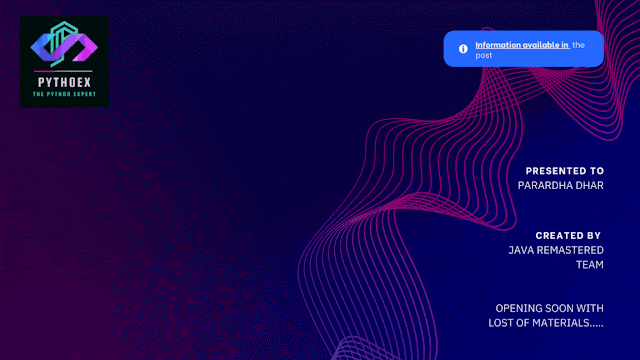WHAT IS PYTHON IDE???
Python IDE (Integrated Development Environment) is a software application that provides a complete environment for writing and running Python code. It includes a code editor, debugger, code completion, syntax highlighting, and other features that help developers write and debug code efficiently.
Python IDEs come in many forms, including standalone applications and plugins for text editors. Some popular Python IDEs include PyCharm, Spyder, IDLE, Visual Studio Code, and Jupyter Notebook.
IDEs make it easy for developers to write, test, and debug code in a single environment. They also typically include tools for managing projects, version control, and deploying code to production. Python IDEs can help developers save time and reduce errors by providing automated tools for code completion, syntax highlighting, and other features that streamline the coding process.
THE BEST ONE ACCORDING TO US IS THE PYCHARM COMMUNITY EDITION
THE STEPS TO HOW TO ISNTLL IT
Go to the PyCharm website (https://www.jetbrains.com/pycharm/) and download the version of PyCharm that is appropriate for your operating system (Windows, macOS, or Linux).
Once the download is complete, double
INSTALL THE EXE
To start coding in Python using the PyCharm IDE, follow these steps:
Install PyCharm: If you have not already installed PyCharm, download it from the JetBrains website and follow the installation instructions.
Create a new project: Open PyCharm and create a new project by clicking on "Create New Project" from the welcome screen. Choose a name and location for your project.
Choose interpreter: Select the interpreter you want to use for your project. If you don't have any Python interpreter installed, you can install one by clicking on "Add interpreter" button.
Create a new Python file: Once the project is created, right-click on the project name in the project window and select "New" and then "Python File". Enter a name for your file and click "OK".
Write your code: Start writing your Python code in the editor window. PyCharm offers many features like code completion, debugging tools, syntax highlighting, and more that can make coding easier and more efficient.
Run your code: After writing your code, you can run it by clicking on the green "Run" button at the top right corner of the editor window or by pressing "Ctrl+Shift+F10" on your keyboard.
Debugging: PyCharm has a powerful debugger, which can help you to locate and fix errors in your code. To debug your code, click on the "Debug" button or press "Shift+F9".
That's it! You're now ready to start coding in Python using PyCharm.




